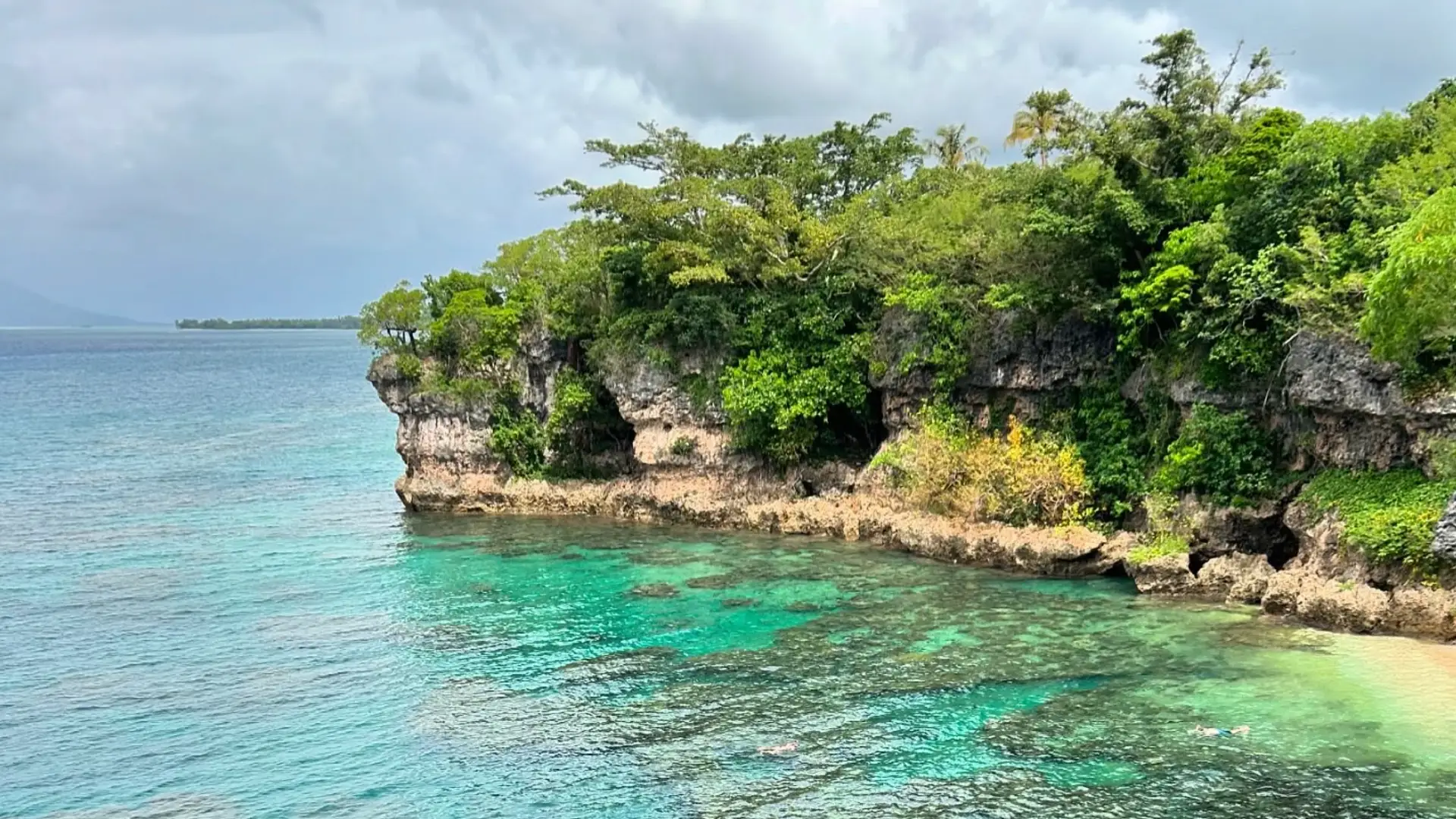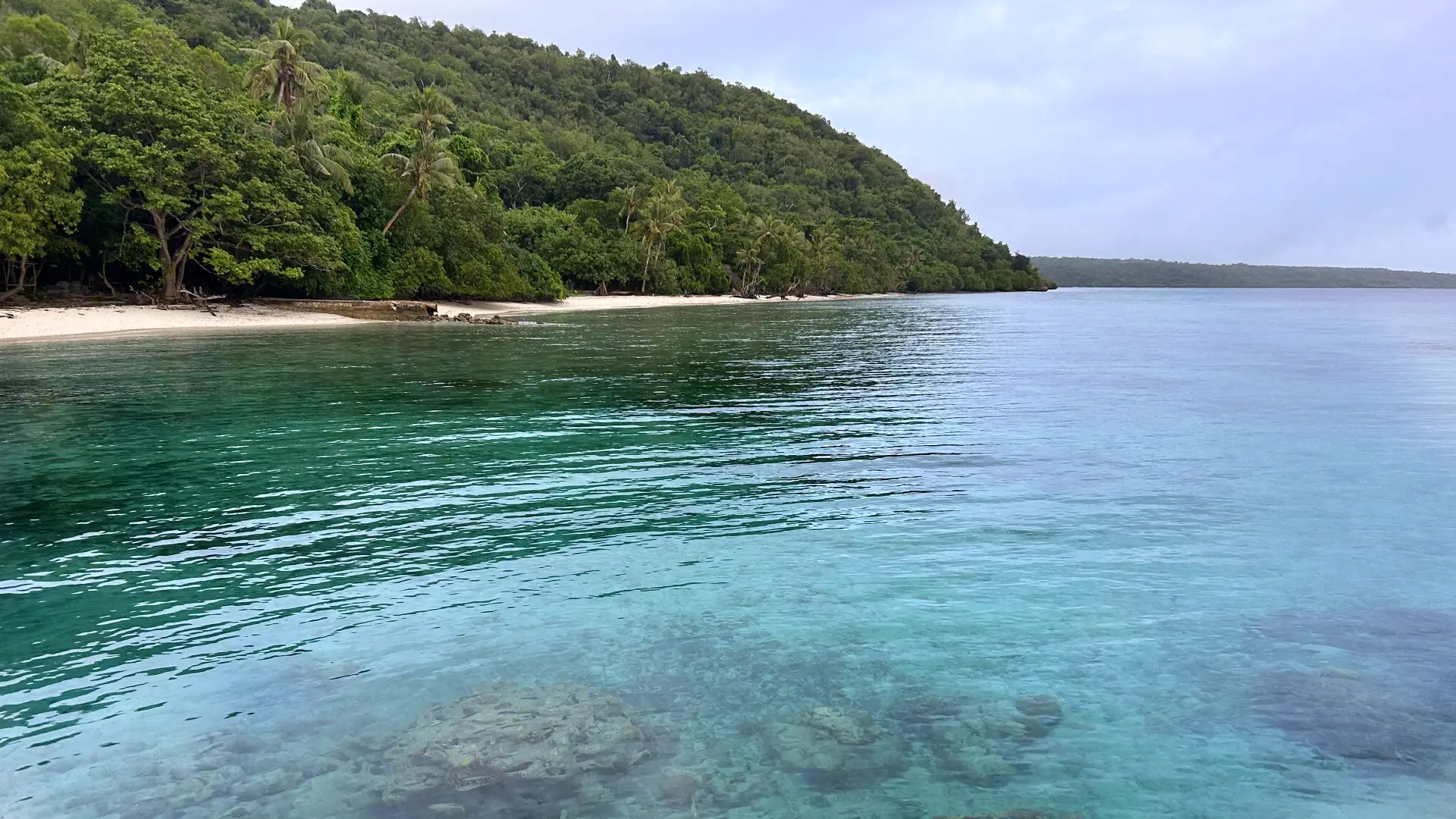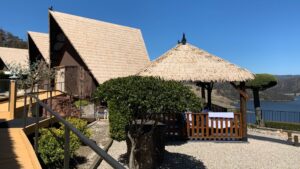Efate, the most populated island in Vanuatu, offers a ton of natural wonders outside of the main city of Port Vila. We opted for a three-night stay on the north-east coast near Epule as part of a larger trip. Considering how small the island is, and that it’s only about a 2.5-hour flight from Brisbane and 3.5-hours from Sydney, this North Efate itinerary is definitely doable over a long weekend.
While many island holiday-seekers jet across the Pacific to Fiji, almost an hour closer to Australia sits the idyllic island chain of Vanuatu. And those who do make it, usually stick to the resorts near Port Vila. And with swim-up bars, infinity pools and international dining options we get it. But, there’s a whole other side to the island (and the 82 others in the country) that’s well worth exploring.
TL;DR: What to know about this North Efate itinerary
- Where is it? About an hour’s drive from Port Vila on the opposite side of Vanuatu’s main island (Efate)
- Budgeting: Blue Lagoon (1500 vatu), Top Rock (1500 vatu), kava (50-150 vatu)
- What to do and see: Beaches along the drive, the brilliant-blue waters of the Blue Lagoon, colourful coral at Top Rock, kava bar-hopping in Epule
- When to go: Spring and autumn, which is March to May and September to November in Vanuatu

Day 1: Drive from Port Villa to Epule, via Blue Lagoon
The Blue Lagoon
After picking up a hire car in town and grabbing up a few supplies at Au Bon Marché, a local supermarket chain, we headed east along the Efate Ring Road. At just shy of 125km in length, it circles the entire island making for a scenic drive through lush forest and along the coast.
There’s plenty of possible stops along the way, but with only time to truly enjoy one (since we arrived in the early afternoon), we opted for the Blue Lagoon — one of the most iconic spots in Vanuatu.
Before getting there though, we took in the blue kaleidoscope of waters offshore just metres from the coastal road. Along the way, you’ll pass by Dry Creek Beach and Ch-Something Beach. (Most beaches charge for entry, so we didn’t get out to see them since we didn’t have the time to enjoy them.)
The Blue Lagoon is a playground for both tourists and locals alike, this natural pool is the perfect place to cool off on a hot and humid day. Although it was overcast when we were there, the water was still impossibly blue, and there were plenty of people splashing about.
There’s platforms to dive from, rope swings and even trees to jump from, but also plenty of quiet areas if you’re after a relaxing dip. It’s a great spot for people watching, and don’t be surprised if some locals swim up to you for a chat. We found everyone in Vanuatu to be extremely friendly!
Before heading to the Blue Lagoon…
- Cost: 1500 vatu per adult, 500 vatu per child
- Hours: Everyday from 8am-5pm (although no official hours are available online, these are widely reported)
- Facilities: Toilets, change rooms playground, picnic tables (including shaded ones) and a bar
- Tip: If you don’t like salt water, visit during low tide when the pool is filled with fresh water.
Driving to Epule
Once sufficiently cooled off… or once the Blue Lagoon closes for the day (for us it was the latter that got us moving), we hopped back in the car to continue our drive along the coast.
Along the way, there’s a few more beaches you cans top at — namely Eton and a few others that we couldn’t see from the road. We also saw some people swimming in streams leading out to the ocean, with a few that had signs for fees, but as it was getting close to sunset we didn’t stop.
It was about 6pm when we arrived at our beachfront accommodation, Le Life Resort, just outside of Epule village. This small resort boasts a surprising array of options, from glamping tents to bungalows with ocean views. If you’re on a real budget, you can even pitch your own tent here too and access the shared facilities.

Day 2: Relax at the beach, snorkel and drink kava with the locals
Enjoying the resort and beach
Whether it’s because we were visiting during a quiet time, or this part of the coast retains a calm and quiet atmosphere all the time, we found it was the perfect spot to just relax.
We stayed in a bungalow, which had a private porch area with ocean views and lounge chairs and rotated between them and the lounges on the beach. After a nice sleep-in, of course.
If you’re not a strong swimmer, or have young children, the beaches along this part of the coast are perfect for you. Much of the coast is made up of small bays (like the one pictured above) that open up into a shallow reef area that’s perfect for snorkelling. Larger waves break where the reef drops off. While it wasn’t the best snorkelling we found around Efate, it was still healthy, colourful reef with plenty of small fish swimming about.

Trying the local kava in Epule
After a day hopping in and out of the water, we joined a few others staying at our hotel for the 15-minute walk to Epule village to meet some locals and try Vanuatuan kava. Having tried it previously in Fiji, we were curious to know how the local variety changed. And it definitely did.
We quickly learned that kava in Vanuatu tends to be much more potent, both in taste and its effects. The ratio of kava-to-water is higher here and powders are less likely to be used than the actual root of the plants here.
There were three kava bars in Epule village, so we got the smallest serving possible (50ml) so we could try all three. Each one charged 50 vatu per 5ml and offered up a small snack to get rid of the taste after, with our favourite being the cut nut. It tasted a bit like a cross between a broad bean and a nut and was something we’d never seen or tried before.
Feeling nice and relaxed by the third bar, some locals invited us over for a chat and we sat around with a cold Tusker beer from the village shop until the sky grew dark. But not too dark for our walk back to the hotel.
Before trying kava in Vanuatu…
- Cost: 50 vatu for 50ml (in a village, but could be more in more established bars in Port Vila)
- Expect: To feel calm and relaxed, and don’t be surprised if your lips and tongue feel a bit numb.
- Tip: If you’ve never tried kava before in Vanuatu, take it slowly. We were recommended to try just 50ml at a time until we felt good. While it’s not an alcohol, treat it like one and don’t go too hard too fast. (And, maybe don’t drive after.)
While we spend day two relaxing, there’s plenty of other things to do in the area. So if you’re not one to laze around, check out some of the other things to do in northern Efate we’d like to do next time.
Day 3: Take in the views above and below the water at Top Rock
Getting advice from Jacques, our hotel’s owner, on what we should do today, we opted to check out Top Rock. And we’re very glad we took his advice.
A 25-minute drive from Le Life, with plenty of locals waving hello along the way, Top Tock sits on the coast in Saama village. From the clifftop, there’s views overlooking outlying islands, including the dormant volcano on Nguna. But it’s the views underwater that are the real showstopper.
Top Rock is home to some of the best snorkelling in the area. The reef was incredibly healthy and the area was abundant with tropical fish. The staff told us there’s a family of resident dugongs here, too, but had no luck seeing any of them.
(Having been to the Great Barrier Reef many times, our bar is set pretty high. And this place offered some excellent snorkelling.)

Before going to Top Rock…
- Cost: 1500 vatu oer adult
- Hours: 7:30am to 5:30pm
- Facilities: Change rooms, toilets, restaurant, free parking
- What to see: Turtles, dugongs, healthy coral and plenty of tropical fish
- Tip: Take it slow. Getting into the water can be tricky depending on the tides and it is a bit slippery.
There’s two spots to enter the water here, and plenty of ground (water?) to cover. So we opted to start on the west side. We swam here for about an hour, then went back up to the top of the cliff for lunch. There’s a few small huts offering shade and tables, along with stellar views, where you can order a hot meal or a cold drink. We shared a chicken stir fry and it was delicious — way better than expected. After lunch, we headed back down the stairs to check out the coral on the east side. Luckily, we arrived just as a group was leaving and had the area pretty much to ourselves.
After you’ve had your fill at Top Rock, it’s an hour’s drive back to Port Vila. We opted to spend an extra night at the hotel and drive back in the morning.
Here’s everywhere we went on this trip
What else is there to do in northern Efate?
While we only had three days to explore this part of the island, there are a few other spots we’d be keen to check out on a return visit.
- Nguna: An island off the coast of Efate with a dormant volcano that you can climb for incredible views of the island and surrounding ocean.
- Pele: Another island that’s known for its stunning beaches and snorkelling.
- Nasinu Hot Springs: Natural hot springs and mud baths.
- Beaches: Eton, Ch-Something, Dry Creek and Sara Beach are all along the roads we drove on this itinerary. We wish we had time to check at least one out.
How to get to North Efate
Being the same island that Vanuatu’s capital, Port Vila, is on, makes getting to Efate much easier than most spots on the country. You can fly direct from Brisbane (2.5 hours) or Sydney (3.5 hours).
From the airport in Port Vila, it’s just over an hour’s drive to the north side of the island. While you can take buses or taxis, it’s probably easiest with your own vehicle.
Where to stay
We stayed at Le Life Resort, just outside of Epule. It’s a relatively small resort, but has an accommodation option for all budgets. We stayed in a bungalow (about $150 per night), which featured a kitchenette, private bathroom and ocean views. It was only metres to one of the small, private beaches at the property.
If you’re looking for a lower-priced option, you can stay in a tent for 1500 vatu. Or, opt for a glamping tent or fare, which is also a bungalow but with shared facilities.
Accommodation options on this part of the island are pretty limited, but there are some home stays and holiday homes nearby, too.
When to go to North Efate
Aim to visit Efate in spring (March to May) and autumn (September to November). This is when you’ll get a winning combination of warm weather and less rain.
Weather in Vanuatu is pretty similar to northern. Queensland; it’s hottest and the most humid during the summer months from December to February. During the winter months (June to August) it can get a bit cool, with averages around just 22 degrees.
Where to go next…
-

Switch off with a weekend on the idyllic Moso Island, Vanuatu
-

Review | A relaxing retreat to the Blue Mountain’s Japanese Bathhouse
-

Exploring Vanuatu’s other side: 3 days itinerary in North Efate



